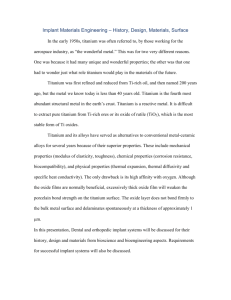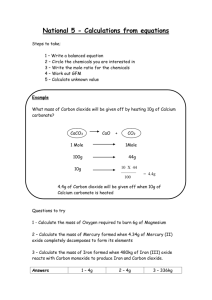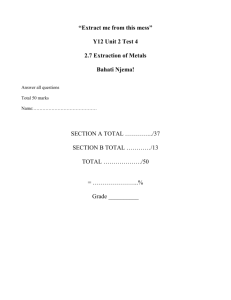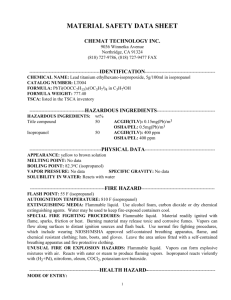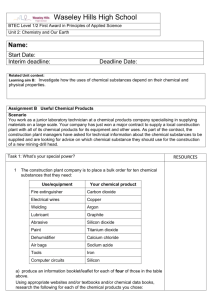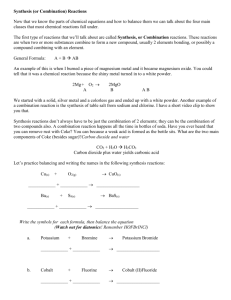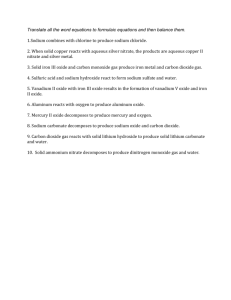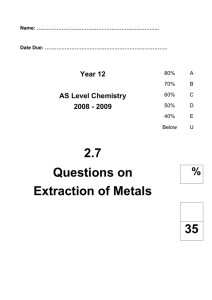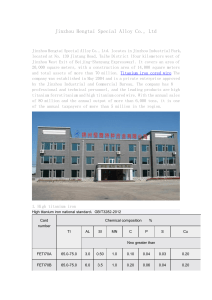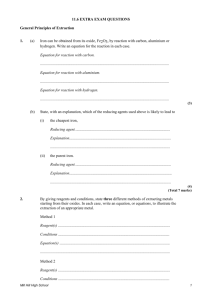chemcial quantities review sheet 1
advertisement
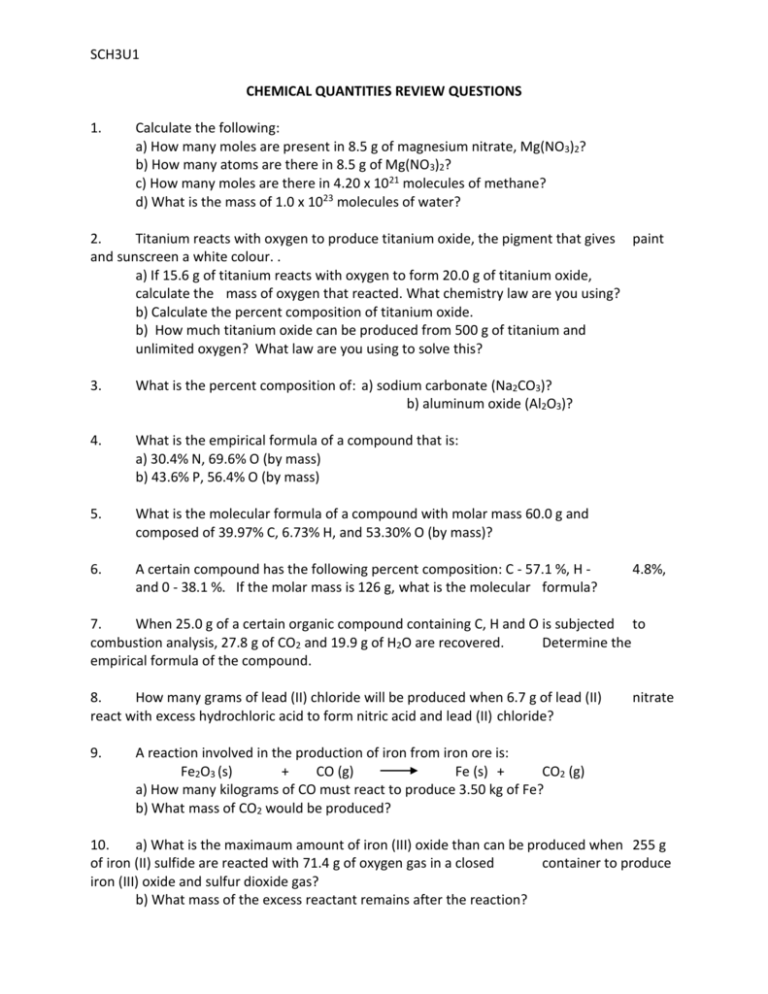
SCH3U1 CHEMICAL QUANTITIES REVIEW QUESTIONS 1. Calculate the following: a) How many moles are present in 8.5 g of magnesium nitrate, Mg(NO3)2? b) How many atoms are there in 8.5 g of Mg(NO3)2? c) How many moles are there in 4.20 x 1021 molecules of methane? d) What is the mass of 1.0 x 1023 molecules of water? 2. Titanium reacts with oxygen to produce titanium oxide, the pigment that gives paint and sunscreen a white colour. . a) If 15.6 g of titanium reacts with oxygen to form 20.0 g of titanium oxide, calculate the mass of oxygen that reacted. What chemistry law are you using? b) Calculate the percent composition of titanium oxide. b) How much titanium oxide can be produced from 500 g of titanium and unlimited oxygen? What law are you using to solve this? 3. What is the percent composition of: a) sodium carbonate (Na2CO3)? b) aluminum oxide (Al2O3)? 4. What is the empirical formula of a compound that is: a) 30.4% N, 69.6% O (by mass) b) 43.6% P, 56.4% O (by mass) 5. What is the molecular formula of a compound with molar mass 60.0 g and composed of 39.97% C, 6.73% H, and 53.30% O (by mass)? 6. A certain compound has the following percent composition: C - 57.1 %, H and 0 - 38.1 %. If the molar mass is 126 g, what is the molecular formula? 4.8%, 7. When 25.0 g of a certain organic compound containing C, H and O is subjected to combustion analysis, 27.8 g of CO2 and 19.9 g of H2O are recovered. Determine the empirical formula of the compound. 8. How many grams of lead (II) chloride will be produced when 6.7 g of lead (II) react with excess hydrochloric acid to form nitric acid and lead (II) chloride? 9. nitrate A reaction involved in the production of iron from iron ore is: Fe2O3 (s) + CO (g) Fe (s) + CO2 (g) a) How many kilograms of CO must react to produce 3.50 kg of Fe? b) What mass of CO2 would be produced? 10. a) What is the maximaum amount of iron (III) oxide than can be produced when 255 g of iron (II) sulfide are reacted with 71.4 g of oxygen gas in a closed container to produce iron (III) oxide and sulfur dioxide gas? b) What mass of the excess reactant remains after the reaction? 11. a) What is the maximum theoretical yield of carbon dioxide when 8.50 g of methane (CH4) react with 31.8 g of oxygen gas to form carbon dioxide and b) If 20.5 g of carbon dioxide is actually produced i nthe reaction (actual yield), the percentage yield? 12. Calculate the mass of aluminum sulfate formed when 6.71 g of Al react with of H2SO4. Be sure to consider determine the reactant that is the limiting reactant. Al (s) + H2SO4 (aq) Al2(SO4)3 (aq) + H2 (g) water? what is 12.95 g Additional Textbook Review Questions: Chapter 6 (p. 229 – 231): 1-30 Chapter 7 (p. 271 – 273): 1-19 ANSWERS: 1 a) 0.057 mol b) 3.1 x 1023 c) 0.00697 mol d) 3.0 g 2a) 4.4g b) 76.0% Ti, 22.0% O c) 641 g 3. a) Na - 43.4%, C - 11.3%, O - 45.3% b) Al - 53.0%, O - 47.0% 4. a) NO2 b) P2O5 5. C2H4O2 6. C6H6O3 7. C3H7O3 8. 5.6 g 9. a) 2.6 kg b) 1.13 kg 10. a) 102 g b) 143g FeS 11. a) 21.9 g b) 93.6 % 12. 15.1 g
